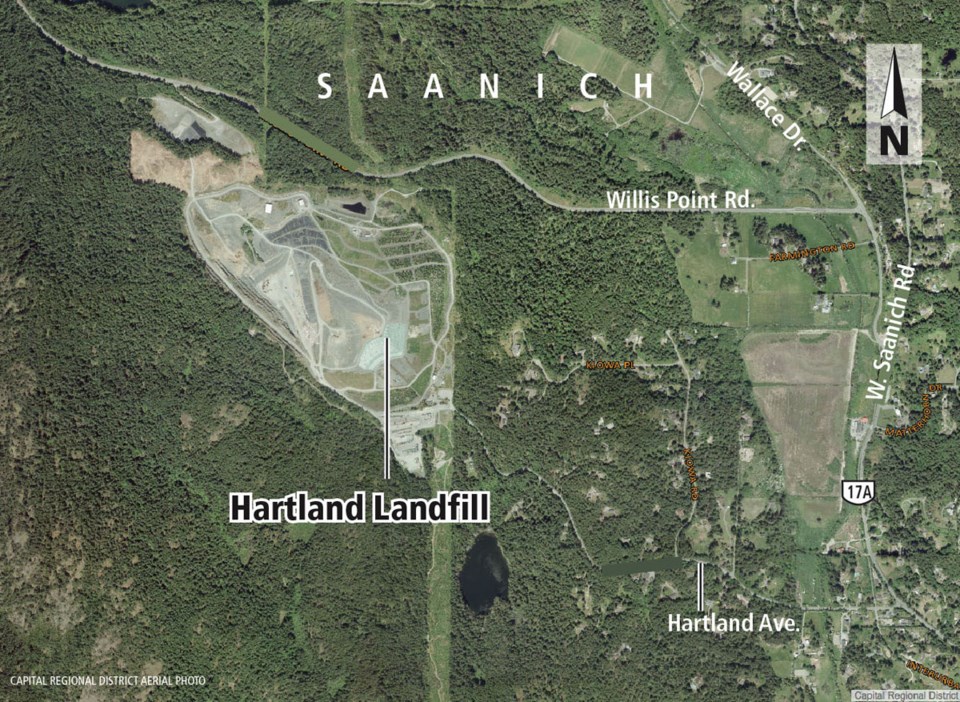Gas from rotting waste at the Hartland Landfill might be better used as renewable natural gas than for generating electricity, Capital Regional District staff say.
Since 2003, the CRD has been collecting and using methane gas created at the Hartland Landfill to generate power — enough electricity for 1,100 homes.
“That landfill gas is simply methane, or biogas that is generated from the decomposition of organic waste that’s already embedded in our landfill,” Russ Smith, manager of environmental resource management, told members of the CRD’s integrated resource management committee.
Hartland’s power generation facility is able to use only about 50 per cent of the gas that’s collected, Smith said. The rest is flared.
Because there is so much surplus gas, staff have been investigating other options.
The committee directed staff to do a business analysis that includes creating renewable natural gas from sewage treatment residue and food scraps, and explores funding sources for building the necessary facilities.
What it came down to was doubling the capacity of the existing power-generation facility at Hartland or cleaning up the biogas and putting it into B.C.’s natural-gas pipeline system, Smith said.
“So it really is almost a wire versus pipe conversation,” he said.
“Do we put more electricity onto the grid or do we clean the gas up and put it onto the pipeline for it to be distributed by Fortis?”
Twinning the power plant would be simple, he said, as the plant was designed with twinning in mind.
Both the green power option and the renewable natural gas option have environmental benefits, as they are destroying the methane, he said.
The lack of benefit with the green power option, he said, is “you’re taking one green electron, i.e. landfill gas turned into power, and you’re pushing out a B.C. Hydro electron, which would have predominantly been made through hydro electricity — so a relatively carbon-inert fuel source.”
That contrasts with putting renewable natural gas into a pipeline where “you’re actually displacing molecule for molecule of fossil fuels,” Smith said.
So the impact with renewable natural gas is displacing 10,000 tonnes of greenhouse gas a year. Whereas with green power, there isn’t really a net benefit, Smith said.
“Although you’re destroying the methane, which is good, you’re not actually displacing something that was generated using fossil fuels to begin with,” he said.
Victoria Mayor Lisa Helps said it’s time to start “reconceptualizing” the Hartland Landfill as the “Hartland Energy Centre.”
“I’m very supportive of this,” Helps said. “I think staff have approached this in a really creative way and are bringing us this really exciting opportunity.”
Committee chairwoman Judy Brownoff noted: “Some of us have been calling Hartland Landfill the Hartland Energy Centre Committee [from] a long time ago as we were generating energy with B.C. Hydro.” She said she is excited to see the results of the business analysis.
Saanich Coun. Dean Murdock called the idea “terrific.”
“One person’s waste is another person’s renewable natural gas,” he said.
“I think for most members of the public in this region, what happens after things go into the green or grey bin probably isn’t much consideration to them. But the fact that staff have been able to come up with a scenario to derive further benefit out of the waste, I think is terrific.”



